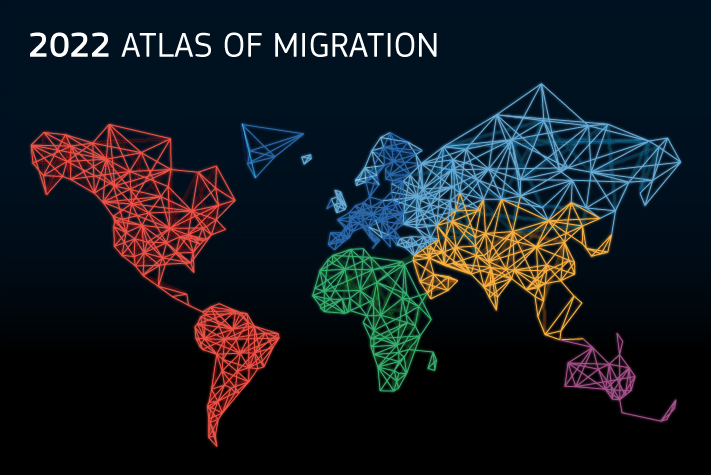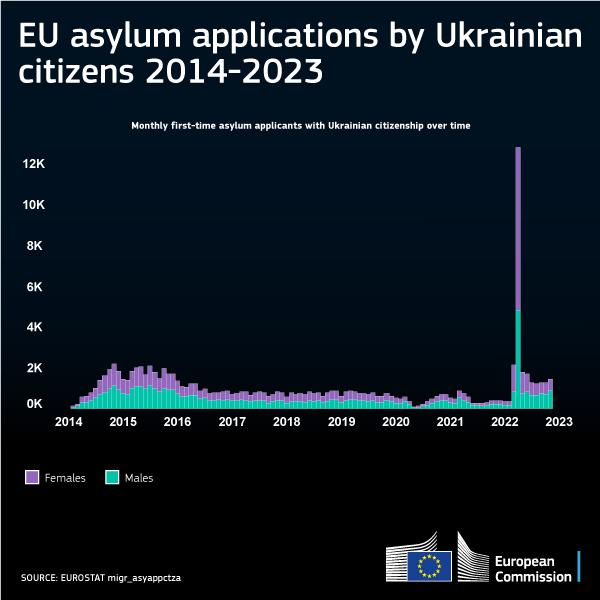
The Atlas gathers harmonised and validated data from official, international sources, including Eurostat, into a single database and presents it with interactive visualisations.
It enables to explore the complexities of international migration and challenge misinformation and disinformation with facts.
For instance, do you know how many people in your country are non-EU citizens?
The Atlas shows that the large majority (91.6%) of people in the EU live in the country of their citizenship. Around 3.1% are EU citizens living in another EU Member State and only 5.3% are non-EU citizens. Country profiles enable you to check figures of your own country.
Always up to date with the latest available data, the Atlas illustrates migratory movements and trends.
A section dedicated to the displacement from Ukraine shows the impact of Russia’s aggression on migratory movements to the EU and illustrates the presence of Ukrainian migrants in the EU over the past decade.
It shows that asylum applications from Ukraine increased from 2014, shot up sharply in March 2022, and then decreased quickly following the adoption of the EU Temporary Protection Directive.
The data indicates that already before the start of the war in February 2022, a large share of the EU residence permits were given to Ukrainian citizens each year (e.g. 30% out of all residence permits in 2021).
Explore the Atlas of Migration for more data on key migration topics, including legal and irregular migration.
The Atlas of Migration: a user-friendly overview of key migration facts and figures
The Atlas of Migration supports evidence-based policymaking in the area of migration.
It is an interactive online tool, containing the latest available data on migration in the 27 EU Member States and 171 non-EU countries and territories. A new edition is released each year.
Harmonised and validated data from official, international sources, including Eurostat, is consolidated into a single database, which can be explored through country-specific profiles. Overviews are also available for continent and sub-continental regions.
This data is illustrated in interactive visualisations including graphs, charts and maps that are accompanied by brief introductory summaries.
The Atlas provides comprehensive, accurate information on key migration-related topics, including:
- the number of people who have migrated, their country of origin and country of destination
- the reasons that people migrate (e.g. for work, to join their families,for education)
- the number of people who applied for asylum or temporary protection in the EU and the outcome of their applications
- remittances, development and humanitarian assistance the EU has granted to non-EU countries
- migrant integration across EU Member States
- demographic characteristics of different countries
In addition to the online tool, which provides continuously updated data, the Atlas is also available as a printed book.
Details
- Publication date
- 31 March 2023
- Author
- Joint Research Centre
- JRC portfolios





